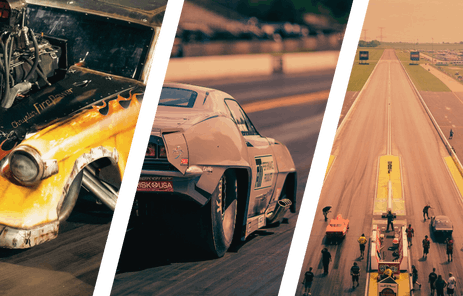After letting the proverbial cat out of the bag last week via its NHRARacer website, the National Hot Rod Association (NHRA) made official its new Factory Experimental (FX) category in a statement issued on Wednesday, confirming the already-popular program that will deliver highly-modified, lightweight, factory-appearing cars in heads-up competition to national events in 2022.
“This is something we’ve been working on for quite a while and we’re really excited for the debut of the FX class,” NHRA National Tech Director Lonnie Grim said.
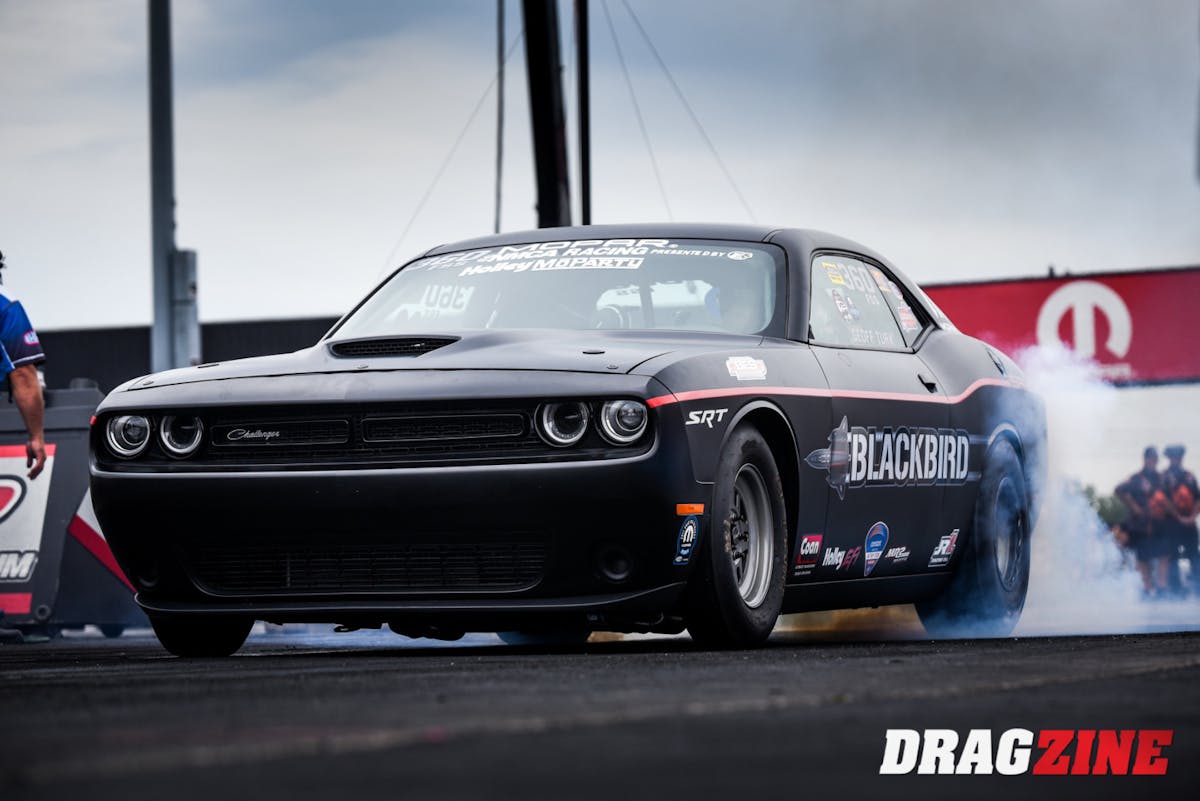
As we’ve learned, conversations within the NHRA and with other technical advisors have been ongoing for several years, but the category began transitioning from concept to reality in the first half of 2021; there was initially intent to have three cars built and and ready to race in time for an exhibition at this year’s U.S. Nationals at Indianapolis, but the window to make that happen came and went, as the NHRA instead shifted its focus to debuting the class in 2022.
“We’re extremely excited to debut this new and thrilling FX class in 2022 and our intention is this will become at a heads-up category at select NHRA Camping World Drag Racing Series events in 2023 and will continue to be included in Competition Eliminator across all divisions,” Grim added. “This class will be one more solid addition to the exciting lineup of very quick NHRA doorslammer classes and there is incredible potential in this class. The fact that it is manually shifted with strong performance capability and will allow fans to enjoy the sounds of 10,000 RPM will be a huge draw for fans and racers alike.”
Already, we’re hearing customers are lining up to have chassis built for FX, and among them are rumored to be three prominent Factory Stock Showdown (FSS) competitors, two of whom previously had or have Pro Stock involvement. Included in this group — and the first to publicly express his intent to enter FX — is veteran sportsman drag racer Geoff Turk, a former NMCA Factory Super Cars (FSC) champion who forever holds the distinction of clocking the first official 7-second run by a factory-built racecar (7.996-seconds at Bradenton, Fla. in Match 2018).
For Turk, one of the sport’s most personally-motivated and competitively-inspired individuals, FX is a natural evolution in his racing career. He accomplished virtually everything he set out to in the FSS/FSC ranks, developing a competitive Dodge program, running in the sevens and winning a championships, before briefly switching to Ford and playing a pivotal role in taking the Cobra Jet program from the outhouse to the penthouse. He then returned to the Dodge camp and, despite a fresh new combination, quickly progressed back to the top in performance. Eyeing the next rung on the performance ladder, Turk became involved in some of the early negotiations regarding FX, but uncertain if it would ever come to fruition, turned his sights to the popular radial-tire Extreme Street 1/8-mile category. He appointed Darren Breaud and company at B&B Race Cars in Tennessee to construct the late-model Dodge Challenger, but halted the work when conversations regarding FX turned serious. With last week’s announcement, he and B&B are now full-steam-ahead on the 2021 Challenger Drag Pak, with a goal for completion in early 2022.
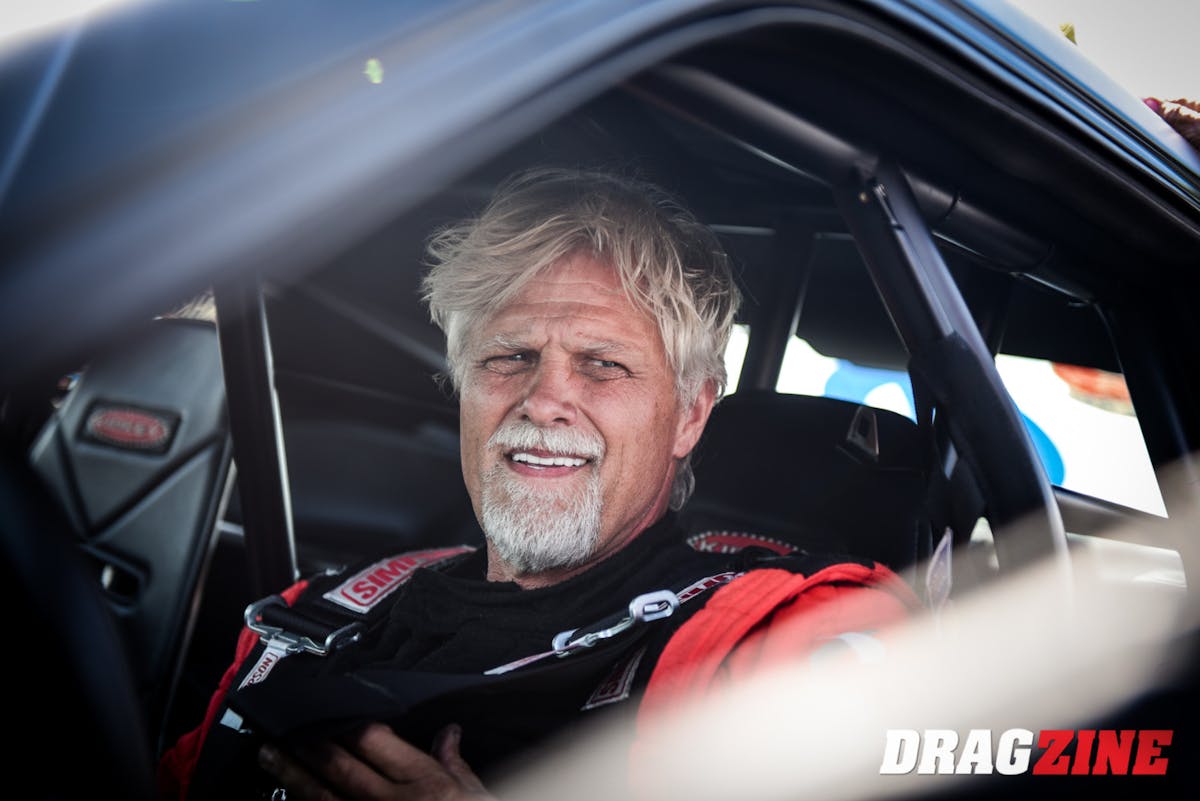
“I talked to the folks at NHRA and they thought it was great that I was interested and they sought my input on it and said they were pursuing it. At the time they had a Ford team and a Chevrolet team lined up, so I said, ‘hey, how about a Mopar?’ I wore Lonnie out calling about every week seeing if they’d made progress on it. I had this Extreme Street car coming together, and I told Darren to hold up on it, because if this class came together, I really wanted to do it.”
Turk is largely pleased with the rules package, saying his only wish is that they had been published sooner, so he could have made more progress with the chassis to this point.
“I think they got input from some of the current Pro Stock teams, some of the current Factory Shootout teams, and some of the people that are running the small-tire radial stuff. They were conjugating on the rules, on whether to allow automatics and manuals, how light they could be, how much stock steel you had to have. And I know they met with the OEM’s several times.”
“It was a way for them to have a class that garners some kind of OEM backing, which they’re lost all of that on Pro Stock,” Turk adds of his thoughts on FX. “They’ve got a ton of it on Factory Stock but that class is an animal. It’s hard for them to control, and there’s a desire to make these cars keep going faster, and they don’t want them to go faster. So you’ve got competitors banging their head against the wall. And then you have all the parity rules, which will take place in this class too, but at least there’s a place you can go faster than 7.50. Instead of evolving Factory Stock in other ways — taking weight out and letting the chassis certification migrate to exceed 7.50 — they thought, ‘let’s just have a class where we can park Factory Stock where it’s at and not let it keep evolving.”
Turk believes as many as 10-20 cars could be active in FX next season, and that belief is backed up by unconfirmed reports of a backlog of orders already placed at prominent Pro Stock chassis shops. He says the word on the street is that NHRA has fielded verbal intent from as many as 25 parties about the category for 2022. He confirms that four cars are already committed, including his own.
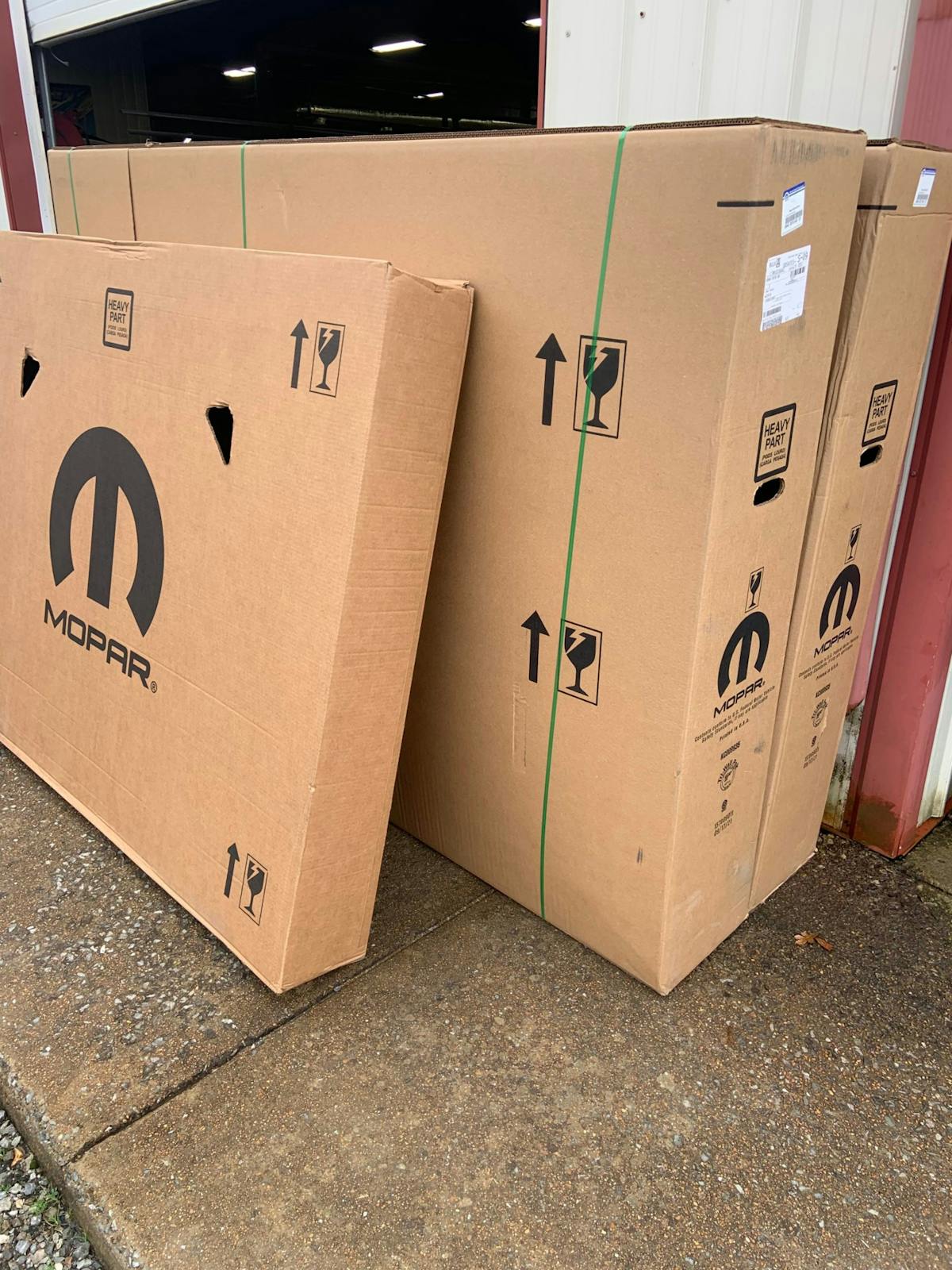
“The only thing this forces you to use as a foundation brick is a showdown motor program that’s competitive,” says Turk. “And the other foundation brick is the Liberty five-speed, which the Pro Stock guys obviously have and understand. So it’s an interesting human dynamic study, because they compromised and threw the Pro Stock guys a bone to give them an invite in, and they threw the Factory Stock guys a bone, and one building block, in terms of the powertrain, comes from Pro Stock and one from Factory Stock Showdown. The car itself is something unique that’s beyond X275, but short of a Pro Stock chassis.”
“We’ve brought a lot of new technology into this class and it will be a 100-percent stock dimensional car. It’s going to be a really exciting class that embraces technology and affordability, and has huge potential from a performance standpoint. It should also be very exciting for the fans from the standpoint they can be in the stands and said, ‘Hey, I drove one of those to the racetrack today,’ and then watch one of these cars make a great run down the track.”
As noted in our initial story, the class will be limited to the 2021 Dodge Challenger Drag Pak, 2020 Chevrolet COPO Camaro, and the 2019 Ford Mustang Cobra Jet. The corresponding factory-built, supercharged engines will be mandated for each make. In a significant departure from FSS, these cars will be built as Pro Stock-style chassis with factory steel body panels; the cars cannot be lengthened, chopped, narrowed, or channeled, thus producing a true factory-appearing racecar. Drivers will manually operate the transmissions and clutch, and power will be applied to the racing surface through 33×10.5-inch slicks. A maximum 66-inch wheelie bar will also be mandated, providing what Turk believes will be some degree of wheels-up starting line action.
“I think we’ll have the wheels in the air. ‘Wheelstand’ might be a strong word, but a 200-foot, 2-foot wheelie is pretty awesome, and I think these cars will do that.”
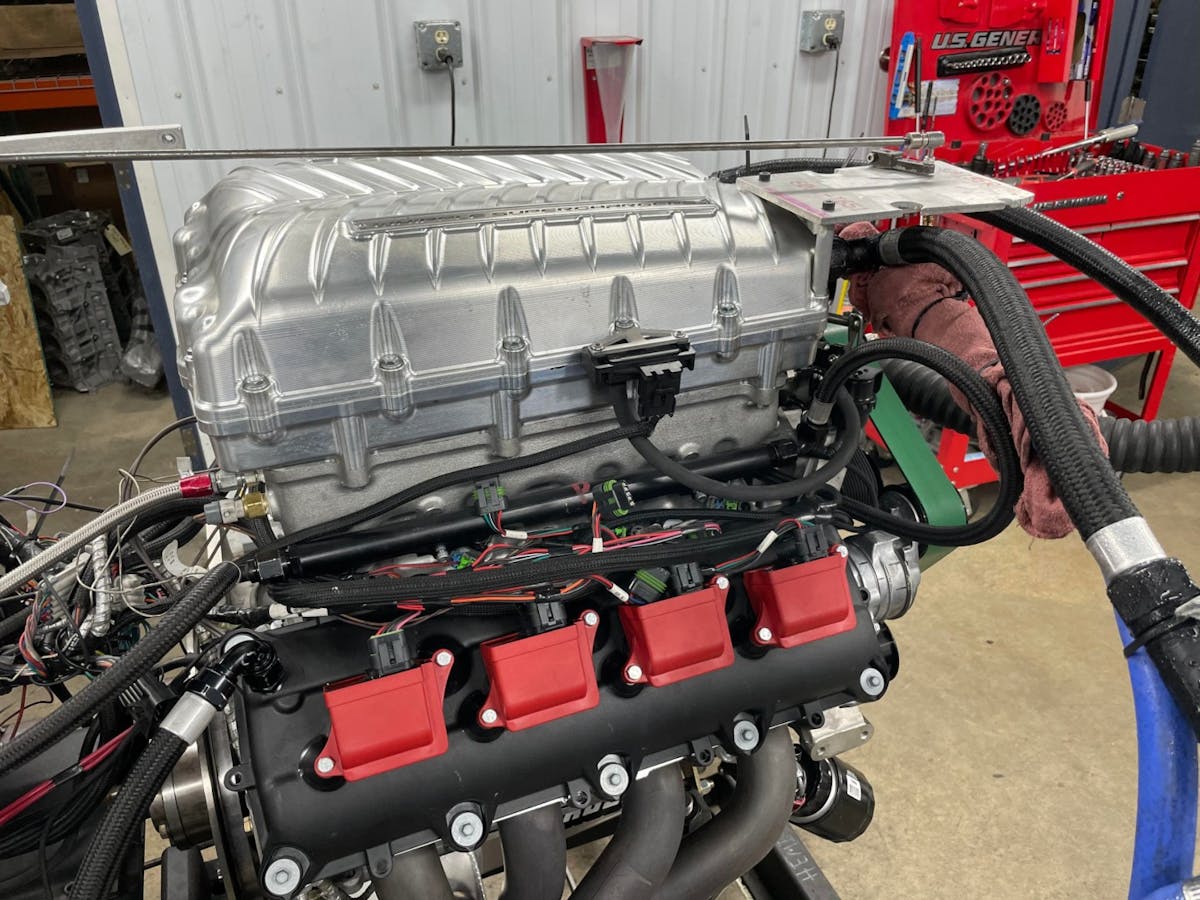
“At least in the case of these FSS engines, there are a lot of factory-derived parts in them that make them a raw, lower cost. I would say in the case of Ford, that’s definitely true…the Ford engines have a lot of bought-from-the-dealership parts in them. The Chevrolet’s are less so, but because GM has been doing this a long time and has the performance parts thing and managing its supply chain figured out better than the others, parts are more readily available and cost is contained for the LS engine. The Mopar combination has the least amount of production derived stuff in it and therefore cost and availability is often more challenged. Everything they’ve got in them now are bespoke racing parts. They’re derived around a Gen III Hemi design, but the SRT block is a $6,000 block — its’s not terrible, but it’s not cheap. The cubic-inch limited classes like Pro Stock, you start getting into expensive materials, and so a FSS program is probably less expensive.”
As a case in point, Pro Stock teams notoriously burn though sets of valve springs in a weekend, but Turk confirms his “look like new” after 35-40 runs/dyno pulls in his highly-competitive Hemi combination. But while the up-front cost for parts and attrition may be less, he believes the possibilities that remain for engine development may drive up the overall cost to current Pro Stock levels.
“I think in terms of buying the engines and parts is cheaper, but end difference is a you’re in a lot different place on the development curve. There’s a lot more room to work within the rules with these variations of engines, and the R&D programs and effort to find more power is probably more expensive. I think Pro Stock is a more mature platform and they’ve mostly plateaud in development.”
Given the existing power of the FSS engines, Turk believes the cars should run in the 6.70 to 6.90 range, nearing or perhaps exceeding 200 mph. The current 354 cubic-inch Gen III Hemi with the FSS-approved 3.0L twin-screw Whipple supercharger produces about 1,600 horsepower at 10,000 rpm — this is roughly 150-175 horsepower more than a 500 cubic-inch Pro Stock engine is believed to put out.
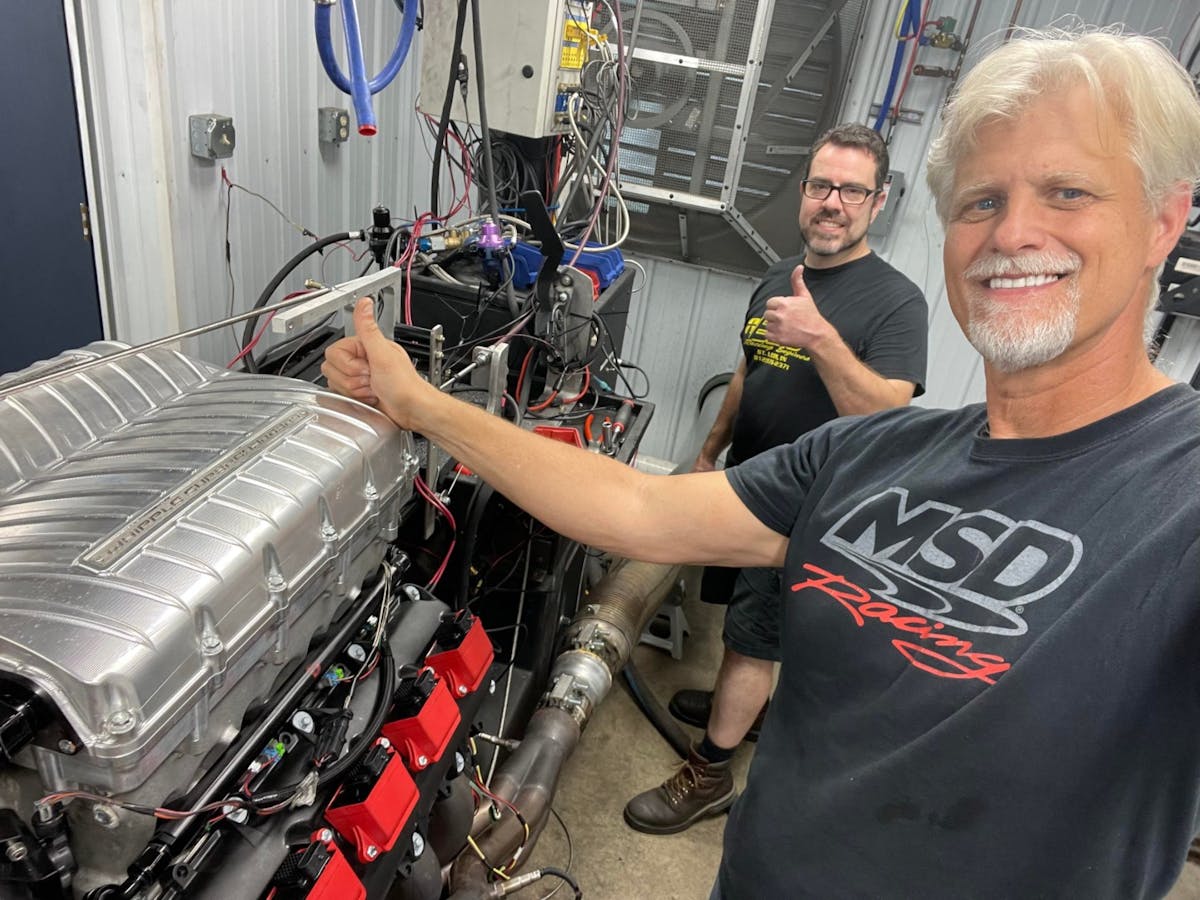
While much has already been said of the potential — and intent or lack thereof by NHRA — to transition FX to the future Pro Stock platform, Turk makes clear that’s not his concern nor motivation to get involved.
“What draws me to this and makes me want to make the investment is not that it turns into Pro Stock…that’s not even on the list. I could care less if it turns into Pro Stock or not. For me, it’s doing something different that I haven’t done yet. Continuing in Factory Stock for a guy like me is like climbing Mt. Everest over and over again. To me it’s about the ‘doing,’ about solving the hard puzzles and the pucker-factor of going faster. After I go 7.50 with the ‘Blackbird,’ what am I going to do if I want to go faster? So this is about being a pioneer, doing something different, a new puzzle — there are a lot of new pieces to this puzzle, from the bias-ply tires to five-speeds with a clutch. They’re lighter tube chassis car…I’ve never driven a tube chassis car. So I’m anxious to try driving a real racecar. Whether it becomes Pro Stock or not, I really don’t care.”
You might also like
SEMA 2025: Paul Rossi Unveils New Gen 3 HEMI-Powered Super Stocker
Paul Rossi has a new high tech Super Stocker coming to the track. PMR Race Cars and Blackbird Performance have backed this amazing build.


